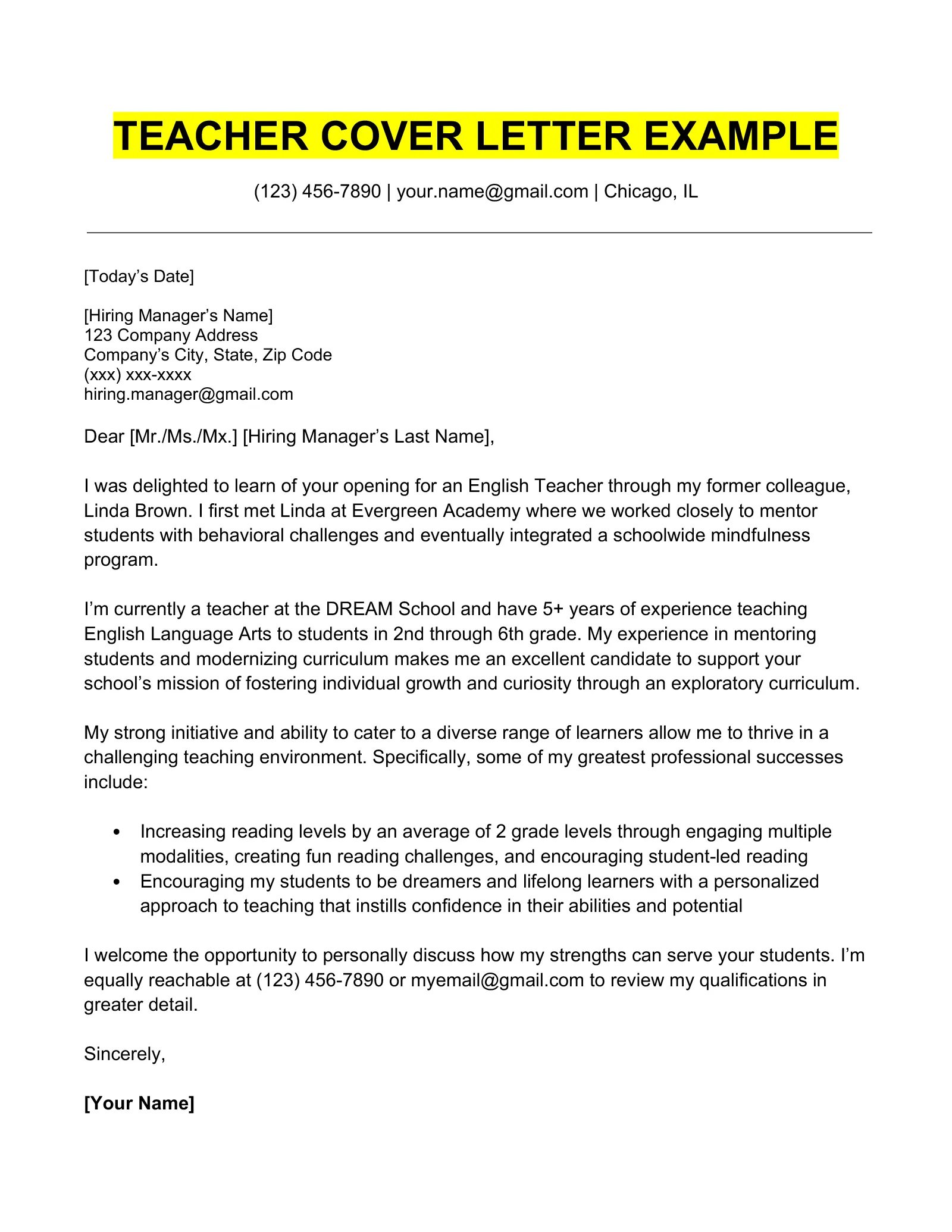Crafting a compelling cover letter is essential for any teacher seeking their dream job. It’s your first chance to make a strong impression and showcase your unique skills, experience, and passion for education. A well-written cover letter doesn’t just list your qualifications; it tells a story, highlighting how you can contribute to a school’s success and create a positive learning environment for students. Mastering the art of the teaching cover letter is crucial to standing out in a competitive job market and ultimately, landing that coveted interview. This guide will provide you with the secrets to crafting a cover letter that gets noticed and helps you secure your next teaching position. Make sure to tailor your cover letter to each specific role.
Highlighting Your Teaching Credentials
Your cover letter should immediately establish your qualifications and suitability for the role. This section is where you clearly and concisely present your core credentials, demonstrating that you meet the basic requirements of the position. Begin by stating your relevant certifications and qualifications. This might include your teaching license, any endorsements you hold (e.g., special education, ESL), and any advanced degrees or certifications you’ve obtained. Providing this information upfront assures the hiring manager that you meet the minimum requirements for the role, paving the way for them to read further. Make sure these match what is on your resume.
Key Certifications and Qualifications
Be specific. Instead of just writing ‘certified teacher,’ list the exact type of certification and the state or region where it’s valid. If you have any specialized training or qualifications, such as certifications in specific teaching methodologies (e.g., Montessori, Orton-Gillingham) or technology integration, be sure to include these as they can set you apart from other candidates. Be sure to mention your degree and any honours or specialisations.
Experience Section

Briefly summarize your teaching experience, focusing on the roles most relevant to the position you’re applying for. Mention the grades you’ve taught, the subjects you’ve covered, and the settings in which you’ve worked (e.g., public school, private school, international school). Highlight the specific skills and knowledge you’ve gained in each role, emphasizing how your experience aligns with the needs of the school. This is your chance to show the hiring manager the diverse experiences and settings you have taught in, further building your profile.
Tailoring to the School
A generic cover letter won’t cut it. To truly impress a hiring manager, you must demonstrate that you’ve researched the school and understand its values, mission, and goals. Tailoring your cover letter shows that you’re genuinely interested in the specific opportunity and that you’ve taken the time to understand what the school is looking for in a teacher. This approach is essential for showing the hiring manager how your unique skills and experience can contribute to the school’s success. Schools are looking for a good fit, and this shows your interest in that fit.
Researching the School’s Mission and Values
Visit the school’s website and read its mission statement, vision, and any other information that describes its philosophy and values. Note any specific programs, initiatives, or approaches that resonate with your own teaching style and beliefs. Pay attention to what the school prioritizes, whether it’s academic excellence, student well-being, community involvement, or a particular teaching methodology. Understanding the school’s values will allow you to align your cover letter to fit their needs.
Demonstrating Alignment
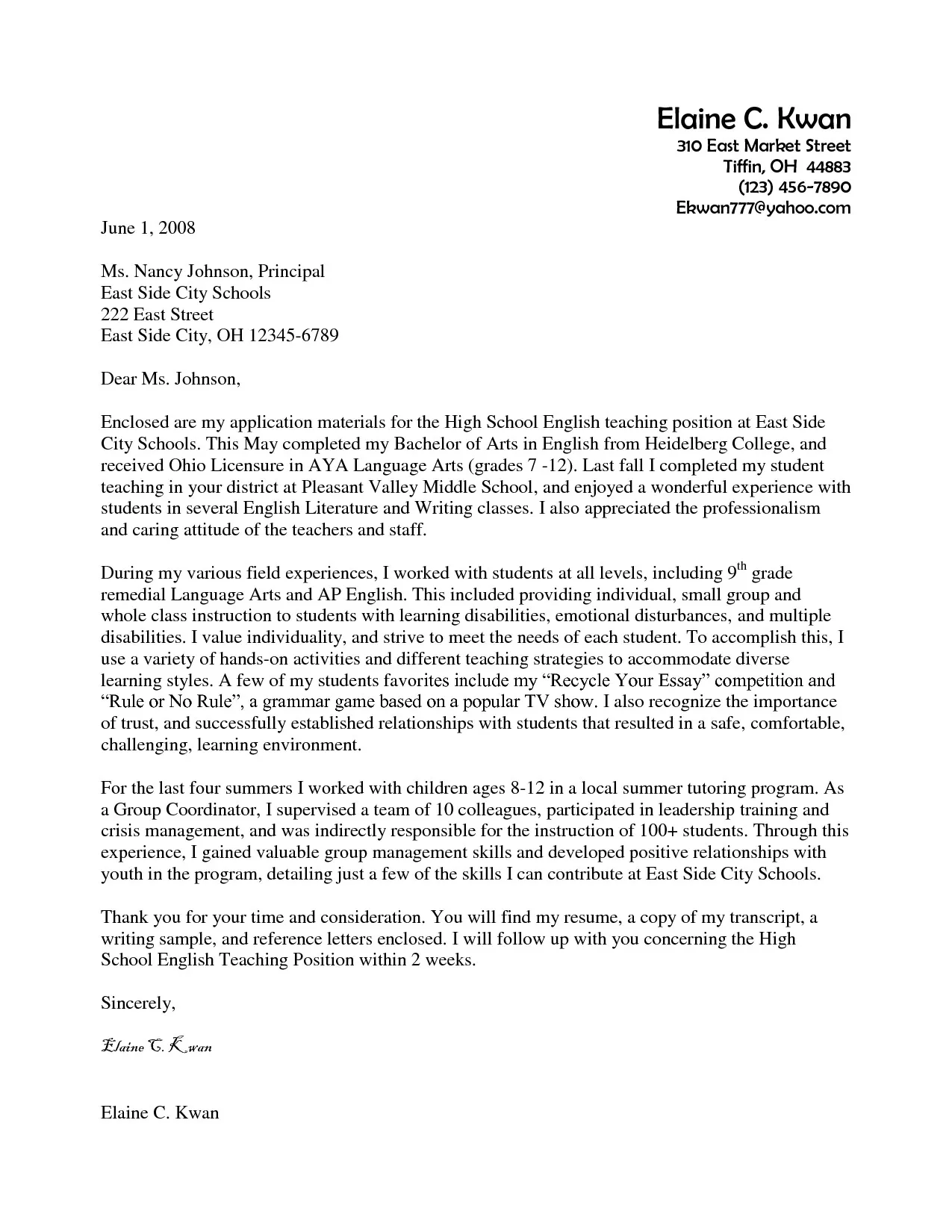
In your cover letter, explicitly connect your experiences and skills to the school’s mission and values. Explain how your teaching philosophy aligns with the school’s approach, and give specific examples of how you’ve demonstrated these values in your previous roles. For instance, if the school emphasizes student-centered learning, describe how you’ve incorporated differentiated instruction, project-based learning, or other strategies that promote student engagement and autonomy. If you’re applying for a specific position, make sure to address the specific requirements of the role. This ensures you’re not just saying you’re a fit, you are showing it.
Showcasing Your Skills
Beyond your credentials and experience, your cover letter should highlight the specific skills that make you a successful teacher. Choose a few key skills that are most relevant to the position and provide concrete examples of how you’ve utilized them in the classroom. Focus on skills that demonstrate your ability to create a positive learning environment, effectively manage a classroom, and help students achieve their academic goals. Showcasing these skills gives the hiring manager more reasons to consider you.
Classroom Management Techniques
Describe your approach to classroom management. Do you use positive reinforcement, restorative practices, or a specific behavior management system? Provide specific examples of how you’ve created a structured and supportive classroom environment. Explain how you handle disruptive behavior, how you promote student engagement, and how you create a culture of respect and responsibility. A good approach can involve many different techniques or a combination of them.
Curriculum Development Experience
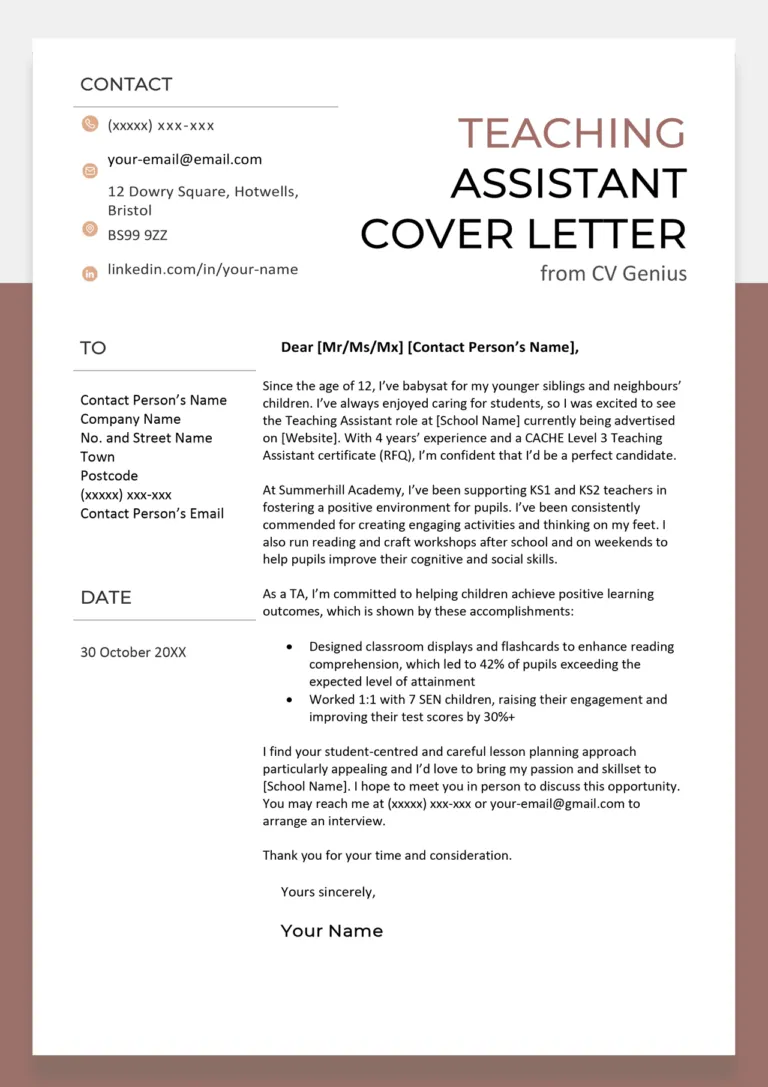
If you have experience in curriculum development, be sure to showcase it. Describe any curriculum projects you’ve been involved in, highlighting your ability to create engaging and effective lesson plans. Mention your experience with standards-based instruction, your ability to differentiate instruction to meet the needs of diverse learners, and your skills in assessing student learning. Consider any specialisation and training you have in this area, and highlight any software knowledge relevant to this area.
Highlighting Achievements
Don’t be shy about showcasing your accomplishments! Use your cover letter to highlight specific achievements that demonstrate your impact on student learning and overall school success. Quantify your results whenever possible, and provide specific examples of how you’ve made a difference in the classroom. Use these moments to talk about successes you have had.
Quantifiable Results in Teaching
Use data to support your claims. For example, you could state that your students’ test scores improved by a certain percentage after you implemented a new teaching strategy. If you’ve implemented any innovative teaching methods, provide specific data to back up your claims. It is also useful to mention any awards you have won.
Positive Impact on Student Outcomes
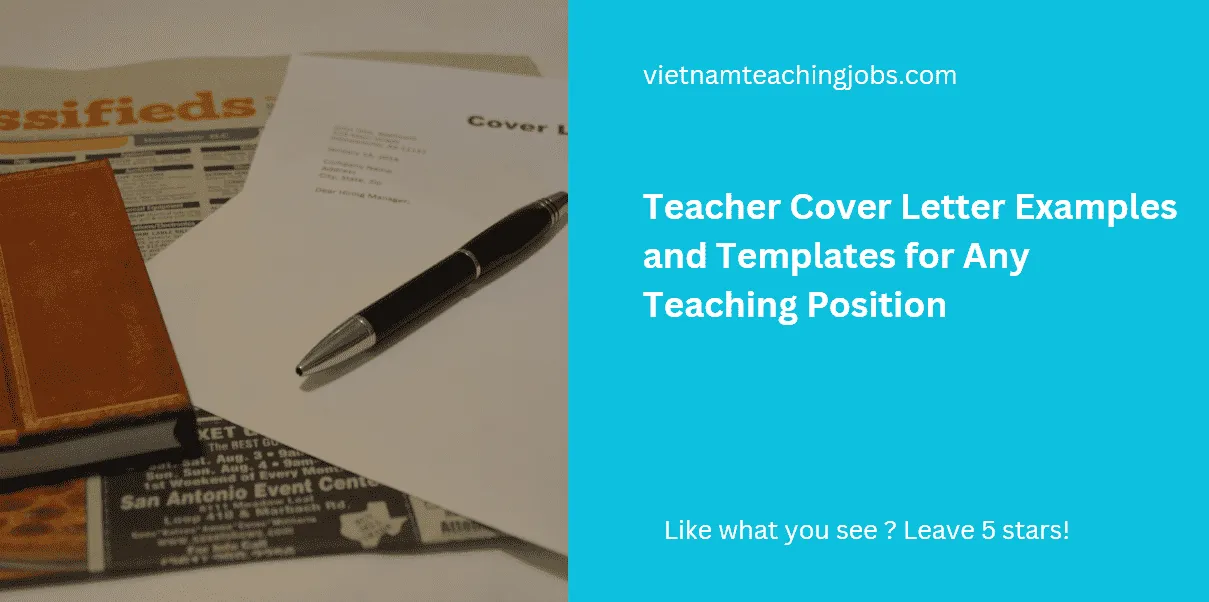
Go beyond test scores and describe the impact you’ve had on students’ overall development. Have you mentored students, helped them overcome challenges, or inspired them to pursue their passions? Do you have examples of how you have worked with parents or the community? Provide examples of how you made a difference, and what the student went on to do. The more you can demonstrate that you care about the students’ future, the better.
Call to Action and Closing
Your cover letter should end with a clear call to action. Express your enthusiasm for the position and reiterate your interest in the school. Thank the hiring manager for their time and consideration, and provide your contact information. By ending with a positive and professional tone, you leave a lasting impression and increase your chances of landing an interview. This also allows the reader to know where to reach you.
Expressing Enthusiasm for the Position
Reiterate your genuine interest in the specific position and the school. Explain why you’re excited about this particular opportunity, highlighting how it aligns with your career goals and teaching philosophy. This shows your commitment to the role. You should also try and restate the qualities that align with the school, as mentioned above.
Thanking the Hiring Manager
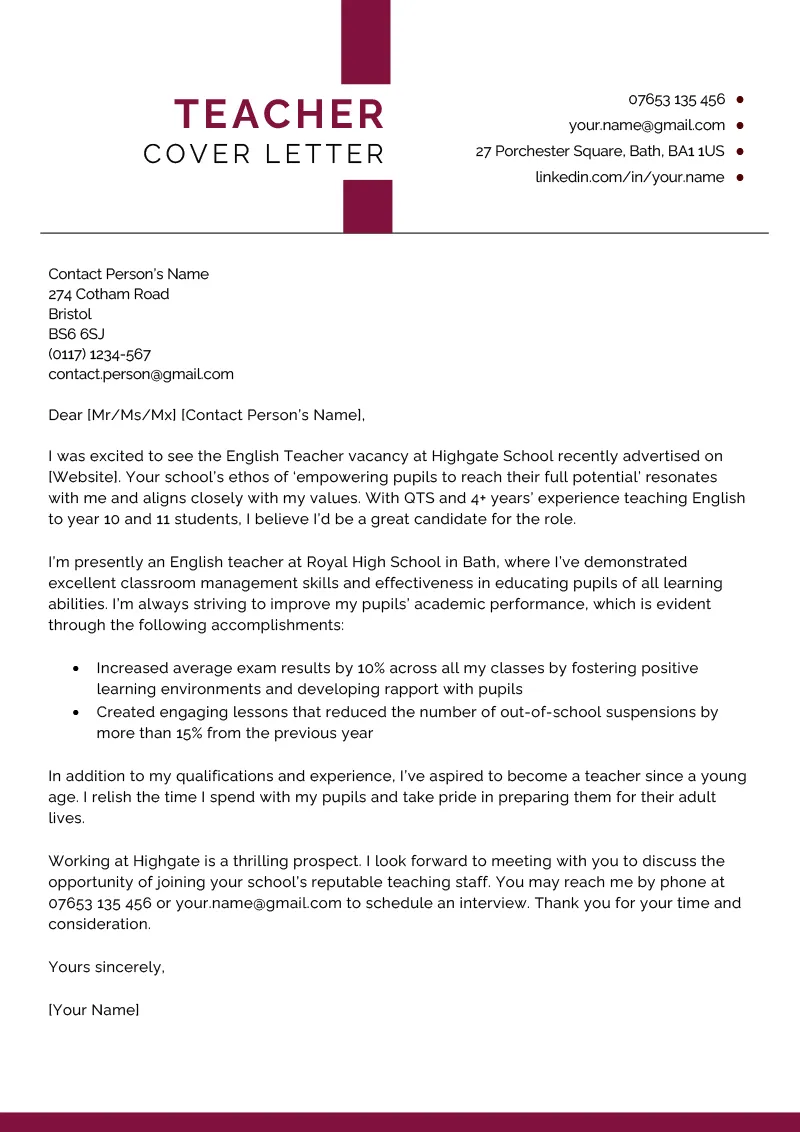
Express your gratitude for the hiring manager’s time and consideration. Let them know that you are available for an interview and provide your contact information again. You may also briefly mention when you’re available to interview or follow up. Thanking the reader is a sign of good manners and shows you have respect for the process and the role.
By following these secrets, you can craft a cover letter that showcases your credentials, demonstrates your understanding of the school, highlights your skills and achievements, and ultimately, helps you land your dream teaching job. Remember to tailor your cover letter to each specific position and school, and always proofread carefully for any errors. Good luck with your job search!
